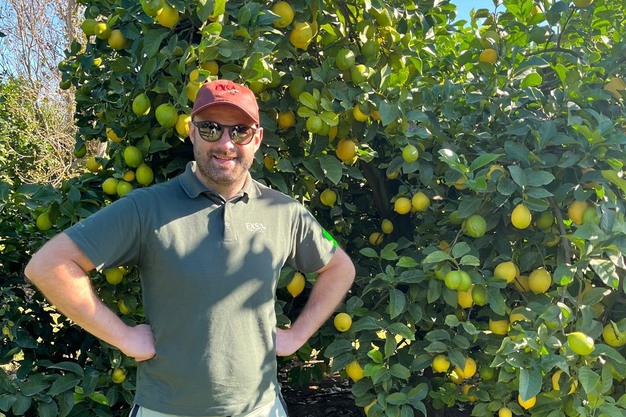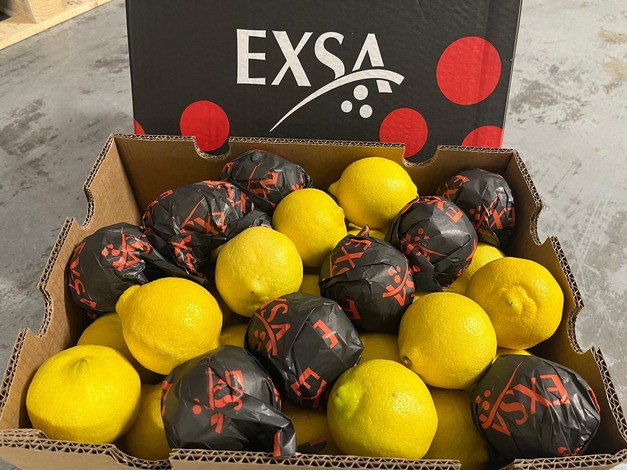"About 25 years ago, there was a claim that grapefruit breaks down fat. That caused quite a stir. Unless influencers can create another such hype by labeling grapefruit as a superfood, I see the market declining rather than growing," begins Henk Nijhoff of Exsa, explaining the declining grapefruit market. This Dutch company focuses on importing overseas fruit. "Even in regions like France and Eastern Europe, which traditionally bought lots of grapefruit, consumption is decreasing."
 © Exsa Europe b.v.
© Exsa Europe b.v.
That's also true for Western Europe. Fewer and fewer people, particularly the younger generation, eat them. They're more likely to opt for convenience," says Henk. He sees rising living standards in some countries playing a role, too. "Grapefruit has always been a relatively inexpensive citrus fruit. When people have more to spend, they're more likely to choose soft and/or exotic fruits, even in winter."
This development does not detract from Henk's belief that the grapefruit market remains good. "There will always be consumers who love the taste, and others who choose grapefruit because of its health benefits," he says. The fruit's quality is good, Henk notes. "It stores well and has a beautiful color, both inside and out. The first grapefruit arrived from South Africa's Eastern Cape in late July, and they're gorgeous." There is traditionally less demand for citrus in the summer.
 © Exsa Europe b.v.
© Exsa Europe b.v.
Nijhoff, though, thinks grapefruit demand should rise again after the summer holidays. "Then everyone will be back to their normal routine, they'll press grapefruit juice again, and demand will increase. Our in-house packing facility helps our sales. We can package fruit any way we want, in display boxes with PLU stickers or nets. We have two state-of-the-art netting machines, so we can also switch quickly and sometimes even deliver A for A, depending on the destination, of course," he explains.
Demand rises from September
As with grapefruit, Henk expects mandarin demand to increase after the summer, too. "When it's 30°C, you don't feel like eating citrus, but after the holidays, mandarins are back in school and work lunches. Sales volumes thus increase in September and October." He has noticed that when it comes to mandarins, people increasingly opt for the Nadorcott and Tango varieties.
 © Exsa Europe b.v.
© Exsa Europe b.v.
"There's a rising shift toward those across Europe. Even in markets that buy purely on price, there's an increasing move towards Nadorcott and Tango mandarins. Consumers like these; they're easy to peel and always taste good. These varieties have truly proven themselves, so, for now, there's no need to worry about sales," says Henk.
He notes that Poland is becoming an ever-larger market for Nadorcott and Tango. "The Czech Republic is following suit and also buying more and more. Eastern Europe is following developments in Western Europe." Henk expects that during the season, around 15 to 20% more Nadorcotts and Tangos will come to Europe from South Africa and around ten percent more from Peru.
 © Exsa Europe b.v.
© Exsa Europe b.v.
"That's due to organic growth, but also because this year's growing conditions were perfect, particularly in South Africa. It was a good, warm summer with sufficient water and cold at the right times—everything a tree needs for good production. There will, thus, be good volume, good sizes, and good quality," the importer says.
Season should have a stable end
Despite the expected somewhat larger supply, Henk foresees a stable season. "If everything goes normally, I expect good, stable sales and pricing for Nadorcott and Tango, in line, or slightly below, last year's. Good fruit generally fetches good prices."
 © Exsa Europe b.v.
© Exsa Europe b.v.
The downside of Nadorcott and Tango's growing popularity is that early mandarin varieties, such as clementines, are less in demand. "Those varieties are increasingly difficult to sell. Our growers still produce them," Henk explains. "But when it comes time to replace the trees, most growers choose to plant Nadorcott or Tango."
According to Henk, unlike grapefruit and mandarins, the lemon market remained strong and better than expected throughout the summer. "Since the northern hemisphere harvest got off to a slow start, that market shouldn't fall below the lower limit either. Oranges, especially juicing oranges, too, enjoyed a good market all summer long," he concludes. (MW)
 For more information:
For more information:
Henk Nijhoff
Exsa Europe
D'Oultremontweg 16c
5154 PD Elshout
Tel: +31 88 735 0014
[email protected]
www.exsaeurope.com
